 |
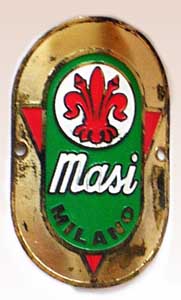 |
 |
 |
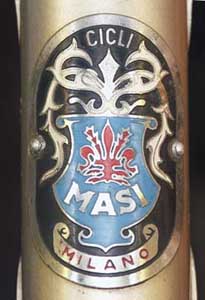 |
 |
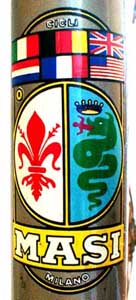 |
 |
 |
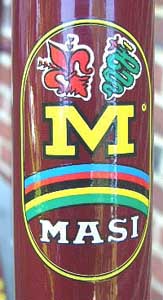 |
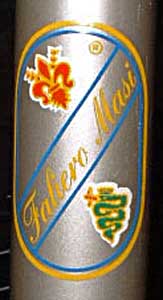 |
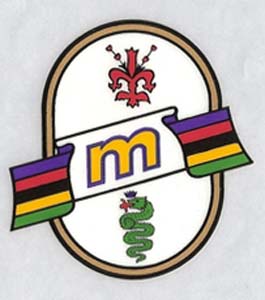 |
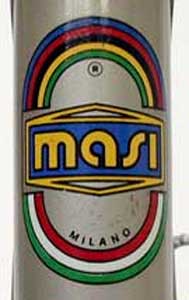 |
 |
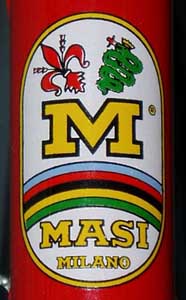 |
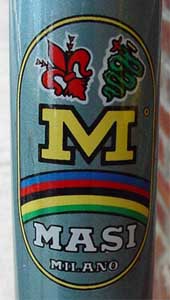 |
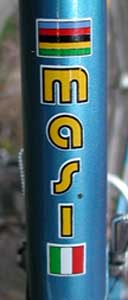 |
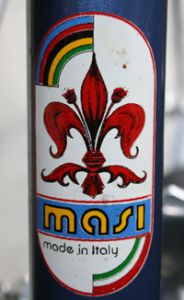 |
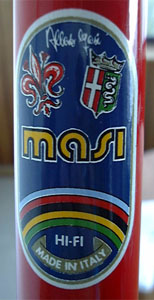 |
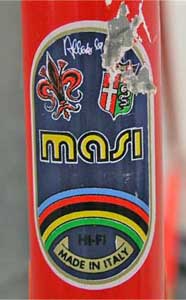 |
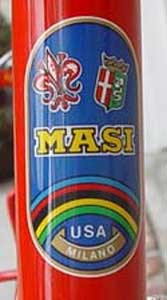 |
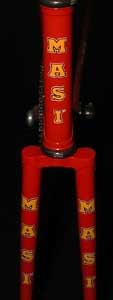 |
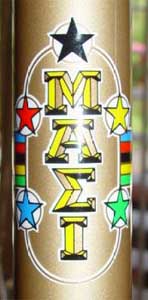 |
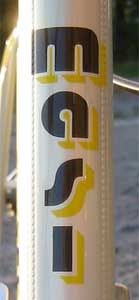 |
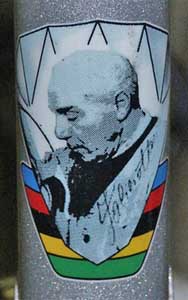 |
||
| Italy, c. 1952 | Italy, c. 1950's | Italy, 1961 | Italy, c. 1963 | Italy, 1968 | Italy, 1970-1971 | Italy, 1970-1971 | Italy, c. 1972 | Italy, USA, 1973 | USA, 1975-1977 | Italy, 1975 | Italy, date unknown | Italy, 1975-1977 | Italy, 1978-1979 | Italy, 1978-1979 | USA, 1978-1990's | Italy, 1978-1983 | Italy, c.1981 | Italy, 1984-1990's | Italy, 1984-1990's | USA, 1990 | USA, 1990 | USA, 1982 | Italy, 1990's-present | USA, 1996 | ||
| Early Masi Speciale Corsa | Same, better condition | Masi Special Pista | Different version (note thinner border and more black space top and bottom) | Wider border, shorter size, some small detail changes. | First Gran Criterium decal set. The colors on this one are quite faded. | Better colors., some small detail changes and better color registration. | Second Gran Criterium decal set, first version. Note no white borders on fleur de lis and serpent. | Second version, also appeared on first US Masi bikes. | Same decal set on later Carlsbad bikes, with "Milano" razored out. |
"Faliero Masi" bike. Not
much is known about this rare model.
|
Unusual decal, typeface matches neither early 70's or late 70's. Decal set came with Faliero signatures. | First Masi Prestige decal set. | Second Prestige decal set. Return to older slabserif typeface (though rounder sanserif typeface remained on down tube). Note lack of white border on upper emblems. | White background version | After Carlsbad closed, US returned to complete decal (with "Milano") on head tube and seat tube. | Rounded sanserif typeface returns to head tube, this time in a vertical format with WC stripes and Italian flag. | A new crest with just the Florentine fleur appears sporadically sometime in 1980 and is gone by 1982. | Back to the older crest. Alberto signature is added, and a new design on the right emblem incorporates Visconti cross. | Same but with black text at bottom. HI-FI refers to the High Fidelity investment cast lugs. | US variation for "Russian" limited edition. | Plain text on Alexi Grewal's US-built track bike. Similar graphic used on US T3V's | "Barcelona" limited edition | Sometime in the '90's, Alberto began to use this 'shadowed' logo in various color combinations. | "Jubilee" 60th Anniversary limited edition. | ||
|
Here's an interesting photo of
Alberto with a few of the head badge designs produced over the years (photo by Rex Gephart) |
Headbadges were stamped by several different companies and
were sometimes used concurrently. Variations in size,
thickness, details of coat of arms, etc. occurred, but not in any predictable way (and therefore may not be a reliable indication of the year). |
|||||||||||||||||||||||||